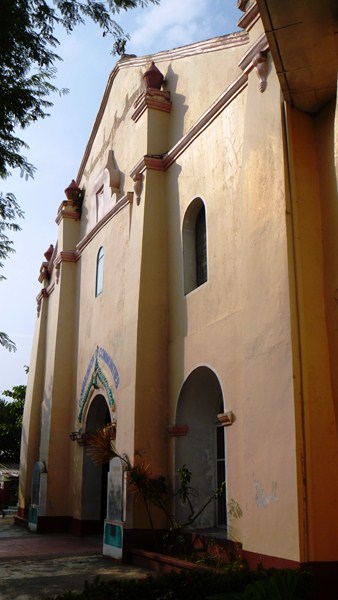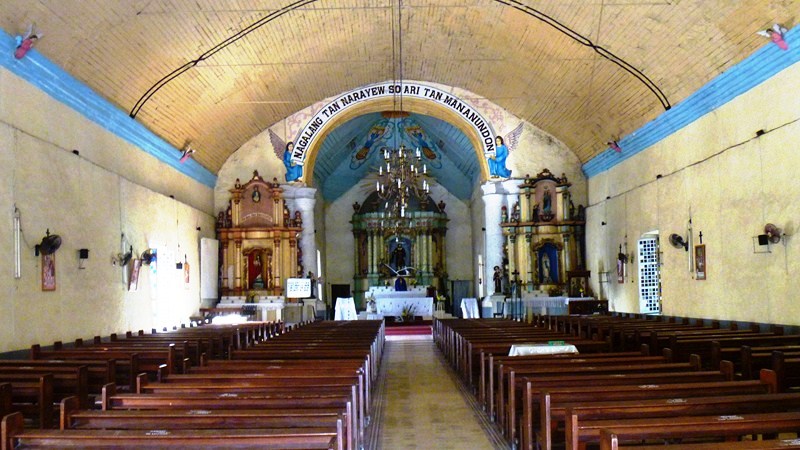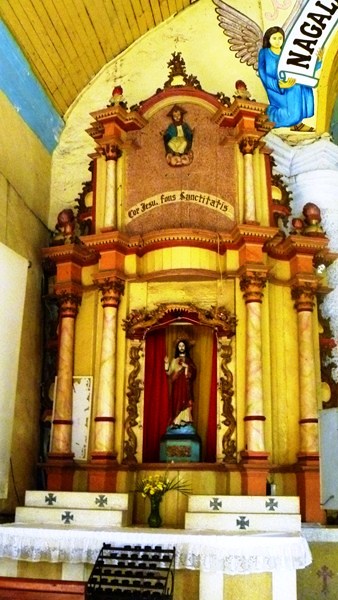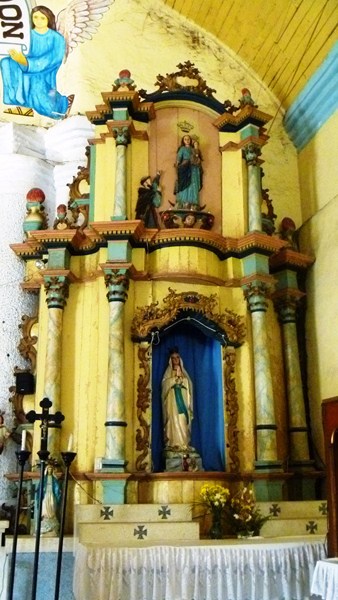 |
| Church of St. James the Great |
After an early morning breakfast at the Capitol Resort Hotel in Lingayen, we again boarded our van for the premier tourism town of Bolinao, a major destination during our 3-day (April 4-6, 2011) Pangasinan Media Tour. Here, it 69,568 townspeople speak the unique Bolinawen dialect. This wasn’t my first visit to this paradise place, having gone there during a 2005 Holy Week break with my son Jandy and two friends at Patar Beach. Four years after my first visit, on May 7, 2009, super typhoon Emong (international code name: Chan Hom, packing winds of 150 kph with a gustiness of 185 kph) made a 7 PM landfall in Bolinao and, in less than an hour, damaged 80-90% of its houses, blocked roads with fallen trees, destroyed 95% of its aquaculture industry and killed at least 20 people (with 4 missing), mostly fish cage caretakers who stayed on their makeshift huts.
 |
| Municipal Hall |
However, nothing could really bring a good town down and, through the cooperation of its townspeople, the town has somehow recovered. We arrived in town in the midst of a high school graduation in front of the town hall and first visited its venerable Church of St. James the Great. This solid, stone church, built by the Augustinian Recollects in 1609, used to double as a fortress against attacks by pirates, the English, Japanese and Americans. Today, this church (as well as 25 other churches) is listed by the National Museum as a National Cultural Treasure.
 |
| The church interior |
The church’s roof and ceiling were damaged during the typhoon but its roof and its trusses (now steel) have since been replaced though still ceiling-less. However, the impressive High Renaissance façade, with its weathered wooden santos in the niches, the bell tower and the beautiful, intricately carved retablos and pulpit remain intact.
 |
| Fr. Odorico Marker |
In front of the church is a memorial marker which challenges the accepted historical fact of the March 31, 1521 first Mass held at Limasawa in Southern Leyte. Instead, the town claims that, in 1324, an Italian (from Friuli) Franciscan Fr. Odorico, en route to China for missionary work, encountered stormy weather and sought refuge at Bolinao Bay. While on land, he celebrated a thanksgiving Mass and also baptized the natives, making him the first evangelizer in the Philippines. The marker was donated by Italian priest Fr. Luigi Malamocco, 62, also from Fr. Odorico’s hometown of Friuli, Italy.















